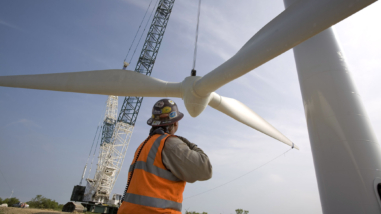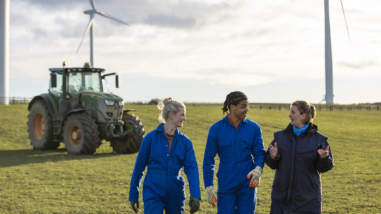(Photo Credit: Asian Development Bank, licensed under CC BY 2.0)
One hundred eighty countries are meeting in Paris right now to address climate change for the first time since the 2009 United Nations Climate Conference in Copenhagen. The disappointing outcome of the Copenhagen Conference had many causes but no country was more castigated than China. Some of this was scapegoating but China’s role in that conference was ambiguous at best.
The Paris meeting is happening against a very different backdrop. The science of climate change is more widely accepted. Low carbon development is not just a hypothetical. Countries have invested billions into clean energy deployment and solar and wind are now cost competitive with fossil fuel in many parts of the world. The plans submitted by over 150 nations for the Paris meeting envision hundreds of gigawatts of growth in clean energy. But the biggest change is the role that China is playing. It’s worth taking a closer look at how far China has come since Copenhagen.
1) Moving from Coal to Clean Energy
To begin with, China has found ways to produce more energy to support its economic growth with less carbon. In the run up to the Copenhagen conference, China was building three coal-fired plants a week. China burned 60 percent of the world’s coal. Last year, China’s consumption and production of coal declined for the first time in decades. China’s total coal consumption dropped by 2.9 percent in 2014 and we’ll probably see a 4 percent decline this year. At the same time, China’s wind energy production has increased tenfold since 2009. This year alone, the country will add as much solar energy capacity as currently exists across the entire United States—and China expects to add even larger amounts in the years ahead.
2) Slower Economic Growth: The New Normal
Prior to the 2008 recession China’s GDP growth was over 10 percent; even in 2009 it was 8.7 percent. Today’s official GDP growth is lower than 7 percent and most experts believe the real economic statistics are even less robust. This much lower level of GDP growth has been dubbed the “new normal” and could have profound structural effects on the Chinese economy. As a result Chinese policy makers are pushing for “quality” GDP growth that is less energy/carbon intensive. Practically, this involves removing some of the favorable economic incentives enjoyed by state owned heavy industries and ‘rebalancing’ the economy to one that is more geared towards the internal Chinese market. A recent study from the London School of Economics argues that economic structural change will be one of the biggest drivers of emission reductions in China.
3) Airpocolypse
The day the Paris meeting started, Beijing was in the middle of another round of toxic smog. Since early 2011, the crippling air pollution episodes across the country have led to public outcry, especially among China’s new urban middle class. Public concerns over air pollution and associated health impacts have changed the domestic debates on environmental measures. While it took Great Britain and the U.S. more than thirty years to effectively address air pollution, China has vowed to address this problem in less than five years. Mitigating climate change can be an important co-benefit of addressing air pollution.
4) Climate Leadership on the World Stage
Copenhagen marked a turning point where China could no longer sit quietly and comfortably in the developing countries camp. In 2009 China overtook the United States and became the world’s largest greenhouse gas emitter and both developing and developed countries pushed China to exert some leadership at the Copenhagen meeting. But in 2009 China was not yet prepared to lead. That’s changed over the last few years, as China has begun to play a much larger role on the world stage.
5) A Foundation for China and U.S. Cooperation
Last but not least, the improved collaboration between China and the U.S. helped create a more constructive atmosphere for the Paris negotiations. Climate change is indeed one of the very few topics in the in the China-U.S. bilateral relationship where more positive progress is likely. Both President’s Xi and Obama have invested political capital and resources to cultivate the relationship. The fact that China chose to announce its 2030 emission peaking target as part of the bilateral agreement with President Obama last year, rather than on any U.N. occasions, marks the change of China’s climate diplomacy strategy. Earlier this year, again in the U.S., a number of Chinese cities announced the “Alliance of Peaking Pioneer Cities,” committing to “peak” their carbon emissions earlier than 2030.
We are still in the middle of the Paris meeting, and uncertainties remain about what kind of climate deal it might present to the world. Still, in many ways the actions China has already committed to are historic and put any global agreement on much more solid footing. The implications of China’s new stance towards low-carbon development will not only shape the Paris deal, but may also represent a new development model for the rest of the world.




